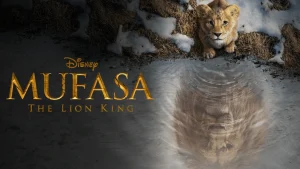The NHL’s New Overtime
January 6, 2016
By Will Schiffman

This year the National Hockey League (NHL) made a rule change for overtime. This year instead of having a 4-on-4 player overtime, not including a goalie, for five minutes, the NHL has changed the to a 3-on-3, not including a goalie, format for five minutes. If no team has scored in that time then the game will go to shootout just like past years. The new rule change has significantly changed the style of play during overtime because of who they put out on the ice, the flow of the game, and individual skills. This new rule change has caught more attention of viewers because of the ongoing action throughout the overtime.
The reason that this rule was adopted is because more and more games were being decided in shootout. Last year of the games that remained tied after the end of regulation, only 40% of the ended in overtime, which left 60% of the games to end in shootout, according to Chris Peters of CBS Sports. This left coaches and goaltenders discouraged about going into overtime because it left the whole game in the hands of two players: the shooter and the goalie. The goalie could lose the game for the team by letting up a goal and the shooter could also lose the game for the team by not scoring. The shootout all in all makes the game an individual sport while the game was meant to be won and lost by the whole team. Those arguments are what led the league to change the overtime to 3-on-3. The 3-on-3 creates more space on the ice for teams to create odd man rushes. This year of the that remained tied after regulation 70% of the games ended in the new 3-on-3 overtime, leaving only 30% to end in shootout (Peters).
Coaches have the difficult decision of who to put on the ice. First the coach needs to figure out what configuration of forward and defenseman he wants to use. It could be two forwards and one defenseman or one forward and two defenseman. Also, because of all of the open ice, the coach needs to put players on the ice that are fast enough to skate by the other team. The rule states that if there was to be a penalty during the period that instead of subtracting a player from the penalized team the other team would add a player to make it 4-on-3. If another penalty was acquired by the same team at the same time then the same team would add another player to make it 5-on-3.
If the game remains tied after the end of overtime then the teams will go into a shootout. In shootout there are three rounds that each teams get a chance to score a goal. If no team has scored in the shootout or both of the teams scored the same amount of goals then it goes into goes to a sudden death overtime where the team that scores first wins.
People that are around the NHL have very different feeling towards the new overtime rule change. Wayne Gretzky, arguably one of the greatest to play hockey, said “I think it’s one of the best things we’ve done in hockey in the last 20 years,” on Wednesday, December 9. He also later said “I think it’s fun for the game, and I think it’s exciting,” adding that it’s “great to watch.” USA Today interviewed the New York Islander captain John Tavares about the new overtime. When asked what his vision is for the the rule change he said that “it will be end-to-end action, a lot of open ice, lots of plays being made, a lot of great saves,” adding, “It is going to be a lot of fun to watch.” He compared it to playing pickup games when he was younger, “Whenever you play next-goal-wins in the backyard, that’s when you see some of the most exciting, intense hockey.” Goalies are going to have to stay on their toes and make big saves on breakaway’s. New York Rangers goalie Henrik Lundqvist said to USA today, “Being smart will be key. One bad bounce and it’s going to be 3-on-0 the other way.”
In my opinion the new overtime change is a great idea. I currently play hockey for Westborough High School ,as a goaltender, and I believe that this would be a better way to settle a game because with overtime being 4-on-4 the games have more of a chance of staying tied and end of going into shootout ,which will depend on an individual to win or lose the game for their whole team. The 3-on-3 overtime does exactly what it is suppose to do and that is decrease the chance of their being an overtime. This will also lead to more money to teams because fans are going to be so interested and glue to the new 3 on 3 overtime.
Sources:
Battaglino, Mike. “Wayne Gretzky Likes NHL’s New 3-on-3 Overtime Format.” NHL.com. NHL.com, 9 Dec. 2015. Web. 15 Dec. 2015.
Peters, Chris. “WATCH: Lightning Top Flyers in NHL’s First 3-on-3 Overtime Period.” CBSSports.com. CBS, 8 Oct. 2015. Web. 15 Dec. 2015.






